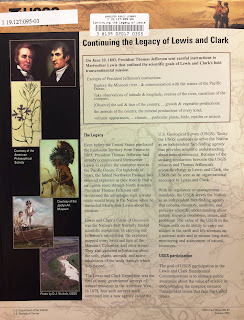May 14th, 1804: Lewis and Clark set out on their Corps of Discovery
The first federally funded scientific expedition set out to fulfill President Thomas Jefferson's instructions "to explore the Missouri [R]iver, & such principal stream of it as by it's course and communication with the waters of the Pacific ocean whether the Columbia, Oregon, Colorado or any other river may offer the most direct & practicable water communication across this continent for the purposes of commerce."
Lewis and Clark crossed into the western portion of the United States for the first time by Americans, exploring the recently acquired Louisiana land, mapping a path all the way to the Pacific Ocean. Their mission was not solely for science and research but also to establish an American presence before other European countries and to gather information on the native peoples of the western land with regard to culture and population size.
Explore their journey through Worcester Public Library's pamphlets, brochures, and other documents.
May 14th, 1973: Skylab launched into orbit
On this same date in 1973, another federally funded mission set out to explore. With the end of the Apollo missions, NASA set its sights on more long-term missions to research how humans and other organisms would fare in space.
Between 1973 and 1974, three manned missions traveled to Skylab to conduct scientific experiments, Skylab 1, Skylab 2, and Skylab 3. The first mission was able to repair the damage done to Skylab during the launch making the orbiting lab habitable for humans. Experiments conducted by the Skylab missions ranged from sleep monitoring to nuclear emulsion. One study from Biomedical Results from Skylab observed the zero-gravity effects on living human cells during Skylab 3.









No comments:
Post a Comment
Note: Only a member of this blog may post a comment.